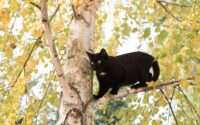How to Stop My Dog From Chewing Stuff When I’m Gone? Expert Tips Revealed!
Welcoming a furry friend into your home is a joyous occasion, but discovering chewed-up belongings upon returning home can quickly dampen the excitement. If you’ve ever wondered, “How to stop my dog from chewing stuff when I’m gone?” you’re not alone. Chewing behavior is a common challenge faced by many dog owners, but with patience, understanding, and the right strategies, it’s a behavior that can be managed effectively.
In this comprehensive guide, we’ll delve into the world of canine chewing behavior, exploring the reasons behind why dogs chew when left alone and providing practical tips and techniques for addressing this issue. Whether your dog is exhibiting destructive chewing due to separation anxiety, boredom, or other underlying factors, we’re here to help you understand their behavior and find solutions that work for both you and your furry companion.
Understanding Your Dog’s Chewing Behavior
Before diving into solutions for preventing unwanted chewing, it’s essential to understand why dogs engage in this behavior in the first place. Chewing is a natural instinct for dogs, rooted in their evolutionary history as scavengers and hunters. In the wild, chewing served several purposes, including keeping teeth clean and healthy, alleviating boredom, and satisfying hunger.
However, in a domestic setting, chewing behavior can become problematic, especially when dogs are left alone for extended periods. One of the primary reasons dogs chew when their owners are away is separation anxiety. Dogs are social animals that form strong bonds with their human companions, and being left alone can trigger feelings of fear, stress, and anxiety.
In addition to separation anxiety, boredom is another common cause of chewing behavior in dogs. Dogs are intelligent and active creatures that require mental and physical stimulation to stay happy and healthy. When left alone without adequate mental and physical exercise, dogs may resort to chewing as a way to alleviate boredom and pass the time.
Teething and exploration are also natural stages of development that can contribute to chewing behavior in puppies. Just like human babies, puppies go through a teething process as their adult teeth come in, and chewing provides relief from the discomfort of teething. Additionally, puppies use their mouths to explore the world around them, leading to a tendency to chew on objects they encounter.
Assessing the Damage
Before implementing strategies to prevent chewing, it’s crucial to assess the extent of the damage caused by your dog’s chewing behavior. Take inventory of the items your dog has chewed, noting any patterns or preferences they may have. Pay attention to the types of objects your dog targets, the locations where chewing occurs most frequently, and the severity of the damage inflicted.
Through understanding the specific objects and areas your dog is drawn to, you can better tailor your prevention strategies to address their chewing habits effectively. Additionally, assessing the damage can help you identify any potential safety hazards posed by your dog’s chewing behavior, allowing you to take proactive measures to protect both your belongings and your dog.
How to Stop My Dog From Chewing Stuff When I’m Gone?
Preventing chewing behavior requires a multifaceted approach that addresses the underlying causes of the behavior while also providing alternative outlets for your dog’s natural chewing instincts. Here are some effective strategies for preventing chewing and keeping your dog entertained and engaged when you’re away:
- Provide Plenty of Chew Toys: Ensure your dog has access to a variety of chew toys specifically designed for dogs. Choose toys made from durable materials that are safe for chewing and resistant to damage. Rotate toys regularly to keep your dog’s interest piqued and prevent boredom.
- Use Taste Deterrents: Apply taste deterrents to objects your dog is prone to chewing to discourage this behavior. These bitter-tasting substances make objects unpleasant to chew, teaching your dog to associate chewing with a negative experience. Be sure to choose a taste deterrent that is safe for use around pets and follow the manufacturer’s instructions carefully.
- Install Indoor Gates and Barriers: Use indoor gates or barriers to restrict your dog’s access to areas where chewing is a problem. This can help prevent your dog from reaching tempting objects or areas of the house where they may be more likely to engage in destructive chewing.
- Practice Crate Training: Crate training can be an effective way to prevent chewing when you’re not home to supervise your dog. A properly sized and comfortable crate provides a safe and secure environment for your dog to rest while also limiting their access to household items that may tempt them to chew.
- Increase Exercise and Mental Stimulation: Regular exercise and mental stimulation are essential for keeping your dog mentally and physically healthy. Engage your dog in daily walks, play sessions, and training exercises to help burn off excess energy and prevent boredom. Puzzle toys, interactive feeders, and obedience training are also great ways to provide mental stimulation and prevent destructive chewing.
- Address Separation Anxiety: If your dog’s chewing behavior is triggered by separation anxiety, it’s essential to address the underlying anxiety issue. Gradually desensitize your dog to being alone by practicing short absences and providing comfort and reassurance when you leave and return. Consider consulting with a professional dog trainer or behaviorist for additional guidance and support.
By implementing these proactive strategies and addressing the underlying causes of your dog’s chewing behavior, you can effectively prevent destructive chewing and create a safe and harmonious environment for both you and your furry friend.
Training Techniques for Curbing Chewing
In addition to using tools and products to manage chewing behavior, incorporating training techniques can help teach your dog appropriate chewing habits. Here are some effective training techniques for curbing chewing:
- Positive Reinforcement: Use positive reinforcement techniques to encourage desirable behavior and discourage chewing. When you catch your dog chewing on an appropriate item, such as a chew toy, praise and reward them with treats or verbal praise. This helps reinforce the behavior you want to see more of.
- Redirecting: When you catch your dog chewing on something they shouldn’t, immediately redirect their attention to an appropriate chew toy. Offer the toy and encourage them to chew on it instead. Consistently redirecting your dog’s chewing to acceptable items helps reinforce the appropriate behavior.
- Consistency: Consistency is key when it comes to training your dog to curb chewing behavior. Establish clear rules and boundaries, and consistently enforce them. Be patient and persistent in your training efforts, and avoid sending mixed messages that could confuse your dog.
- Supervision: Supervise your dog whenever possible, especially during times when they are more likely to engage in chewing behavior. If you’re unable to supervise them, confine them to a safe area or use a crate to prevent access to tempting objects.
- Desensitization: If your dog exhibits chewing behavior due to anxiety or stress, gradually desensitize them to the triggers that cause anxiety. Use counterconditioning techniques to help your dog form positive associations with the triggers, reducing their anxiety and minimizing the need to chew.
By incorporating these tools and training techniques into your routine, you can effectively manage your dog’s chewing behavior and create a safe and harmonious environment for both you and your furry companion.
Addressing Underlying Issues
Sometimes, chewing behavior in dogs can stem from underlying issues that need to be addressed. Here are some common underlying issues to consider:
- Anxiety or Stress: Dogs may resort to chewing as a coping mechanism for anxiety or stress. Identify potential sources of stress in your dog’s environment, such as changes in routine, loud noises, or separation anxiety, and work on minimizing or eliminating them.
- Boredom or Lack of Stimulation: Dogs left alone for long periods without adequate mental and physical stimulation may become bored and resort to chewing as a form of entertainment. Ensure your dog receives plenty of exercise, playtime, and mental enrichment to keep them mentally and physically engaged.
- Medical Conditions: Certain medical conditions, such as dental problems or gastrointestinal issues, can lead to excessive chewing behavior. If you suspect that your dog’s chewing is due to a medical issue, consult with your veterinarian for a thorough examination and appropriate treatment.
- Teething: Puppies, in particular, may chew more during the teething process as they seek relief from discomfort caused by erupting teeth. Provide appropriate chew toys designed for teething puppies and offer cold or frozen items, such as washcloths or rubber toys, to soothe their gums.
- Attention-Seeking Behavior: Some dogs may engage in chewing behavior as a way to get attention from their owners. If your dog’s chewing seems to be motivated by attention-seeking behavior, avoid inadvertently reinforcing the behavior by giving them attention when they chew inappropriately.
Addressing these underlying issues may require a combination of management strategies, behavior modification techniques, and, in some cases, professional guidance from a veterinarian or certified animal behaviorist.
Managing Chewing While You’re Away
Managing your dog’s chewing behavior while you’re away requires proactive measures to prevent boredom and minimize opportunities for destructive chewing. Here are some strategies to consider:
- Provide Interactive Toys: Offer a variety of interactive toys, puzzle feeders, and chew toys to keep your dog mentally stimulated and entertained while you’re away. Rotate the toys regularly to prevent boredom and maintain your dog’s interest.
- Use Environmental Enrichment: Create an enriched environment for your dog by providing opportunities for exploration and mental stimulation. Scatter food puzzles or hide treats around the house to encourage your dog to engage in natural foraging behaviors.
- Establish a Routine: Establish a consistent daily routine for your dog that includes regular exercise, playtime, and mental enrichment activities. A structured routine can help alleviate boredom and reduce anxiety, making destructive chewing less likely.
- Use Confinement Wisely: If your dog tends to chew when left alone, confine them to a safe, dog-proofed area of the house, such as a designated chew-proofed room or a secure crate. Ensure the confinement area is comfortable and includes appropriate chew toys to keep your dog occupied.
- Consider Doggy Daycare or Dog Walking Services: If your schedule allows, consider enrolling your dog in doggy daycare or hiring a dog walker to provide companionship and stimulation while you’re away. Regular socialization and exercise can help prevent boredom and reduce the likelihood of destructive chewing.
By implementing these strategies and addressing any underlying issues contributing to your dog’s chewing behavior, you can help ensure a harmonious and stress-free environment for both you and your canine companion, even when you’re not at home.
Case Studies and Success Stories
Real-life examples can provide valuable insights into managing chewing behavior in dogs. Here are some case studies and success stories showcasing effective strategies for curbing destructive chewing:
- Case Study 1: Luna’s Anxiety Relief: Luna, a young Labrador Retriever, exhibited excessive chewing behavior when left alone. Her owner implemented a combination of environmental enrichment, regular exercise, and desensitization techniques to reduce Luna’s anxiety and redirect her chewing to appropriate toys. With consistent training and patience, Luna’s chewing decreased significantly, and she now enjoys her time alone without causing damage to household items.
- Case Study 2: Max’s Teething Troubles: Max, a playful Golden Retriever puppy, experienced discomfort and irritability during the teething process, leading to increased chewing on furniture and shoes. Max’s owner provided him with a variety of teething toys, frozen treats, and supervised play sessions to soothe his gums and redirect his chewing behavior. With proper management and patience, Max successfully navigated the teething phase without causing damage to household belongings.
- Success Story: Bailey’s Boredom Buster: Bailey, a high-energy Border Collie mix, displayed destructive chewing behavior due to boredom and lack of mental stimulation. Bailey’s owner introduced a daily routine of interactive games, obedience training, and outdoor activities to keep her mentally and physically engaged. By providing Bailey with outlets for her energy and intelligence, her destructive chewing subsided, and she now enjoys a balanced and fulfilling lifestyle.
These case studies and success stories highlight the effectiveness of proactive management, behavior modification, and positive reinforcement in addressing chewing behavior in dogs.
Conclusion
Addressing your dog’s chewing behavior requires patience, consistency, and a thorough understanding of their individual needs. By identifying the underlying causes of chewing, implementing appropriate management strategies, and providing ample mental and physical stimulation, you can help your dog develop healthy chewing habits and prevent destructive behavior.
Remember to seek professional guidance if needed and celebrate each small success along the way. With dedication and effort, you can create a harmonious living environment where both you and your dog can thrive happily together.
Frequently Asked Questions
Why does my dog chew things when I’m not home?
Dogs may chew on household items when left alone due to boredom, anxiety, or a lack of appropriate chew toys to keep them occupied.
How can I tell if my dog has separation anxiety or is just bored?
Signs of separation anxiety in dogs include destructive behavior, excessive barking or howling, and house soiling. Boredom-related chewing may occur alongside other signs of restlessness or lack of stimulation.
What are some common household items that dogs tend to chew?
Common household items that dogs may chew on include shoes, furniture, clothing, electrical cords, and children’s toys.
Is chewing on household items harmful to my dog’s health?
Chewing on certain household items can pose risks to your dog’s health, such as choking hazards, gastrointestinal obstructions, and toxic exposure to chemicals or materials.
How can I prevent my dog from chewing on things while I’m away?
Providing appropriate chew toys, crate training, and gradually increasing alone time can help prevent destructive chewing behavior when you’re not home.
Should I punish my dog for chewing on things?
Punishment is not recommended for addressing chewing behavior, as it can create fear and anxiety in your dog. Instead, focus on positive reinforcement and redirection to more appropriate chew toys.
Are there specific breeds more prone to chewing behavior?
While chewing behavior can vary among individual dogs, certain breeds, such as Labrador Retrievers, Golden Retrievers, and Pit Bulls, may be more predisposed to chewing due to their natural instincts and energy levels.
Can chewing behavior be a sign of an underlying medical issue?
Yes, excessive chewing behavior in dogs can sometimes indicate dental problems, oral discomfort, or underlying health issues. Consult with your veterinarian if you notice any changes in your dog’s chewing habits.
How long does it take to train a dog to stop chewing on things?
The time it takes to train a dog to stop chewing on household items can vary depending on the dog’s age, temperament, and the consistency of training methods. It may take several weeks to see significant improvement.
What should I do if my dog’s chewing behavior persists despite training efforts?
If your dog’s chewing behavior persists despite training efforts, consider consulting with a professional dog trainer or behaviorist for personalized guidance and support.




